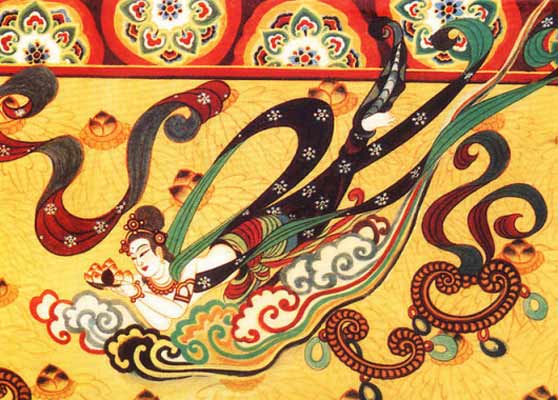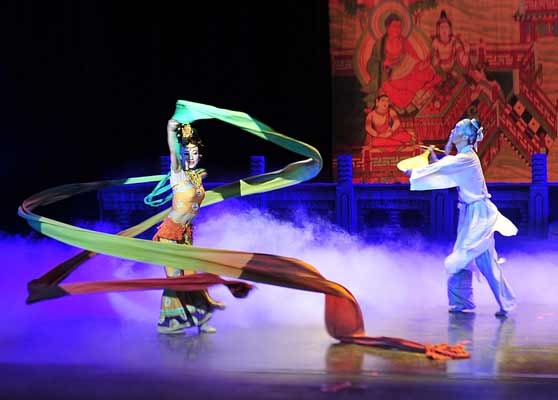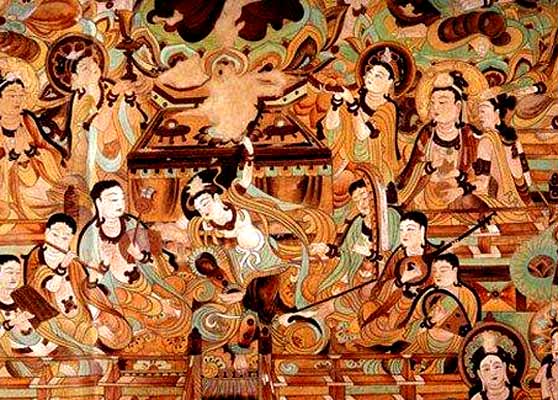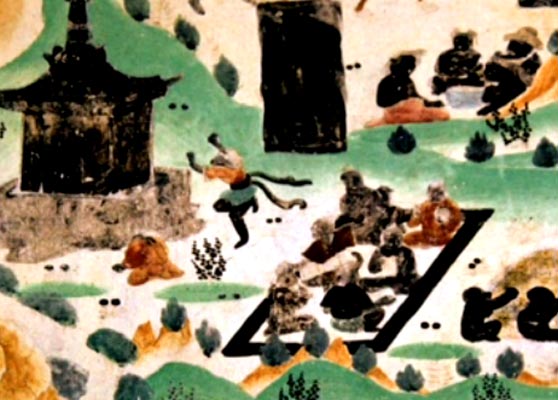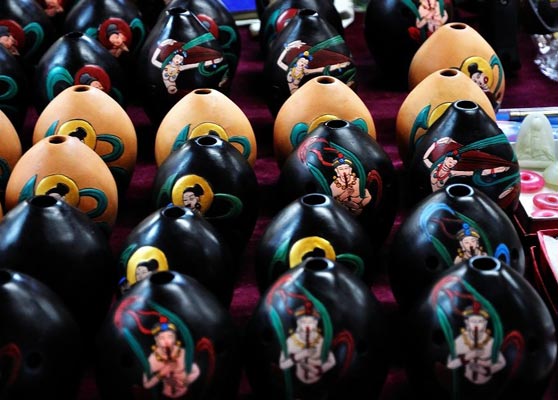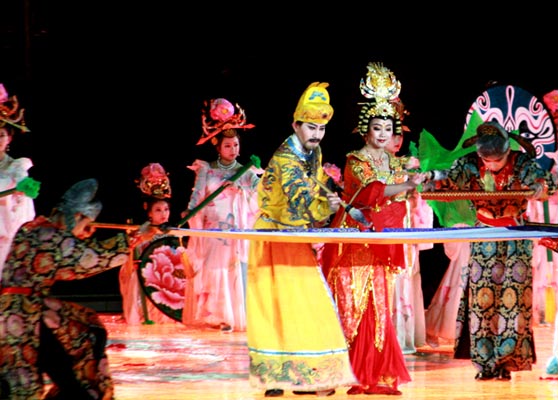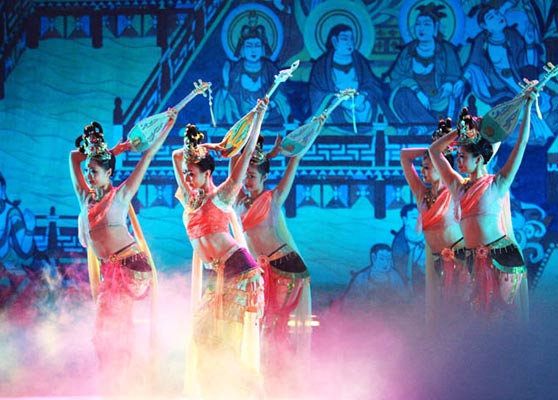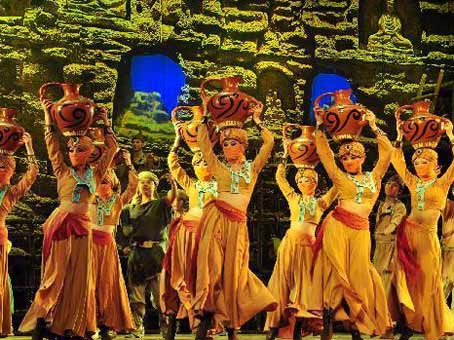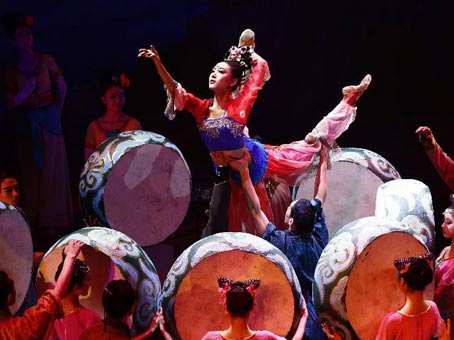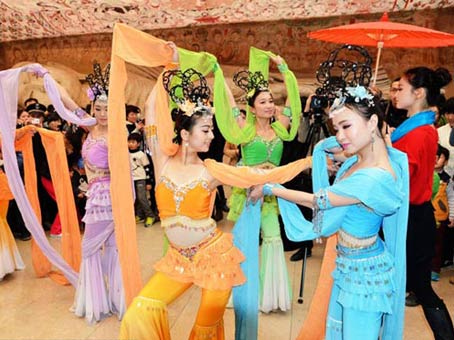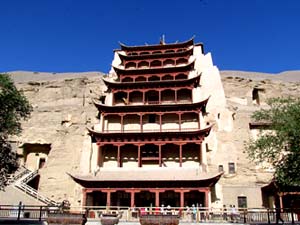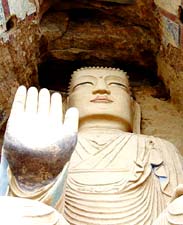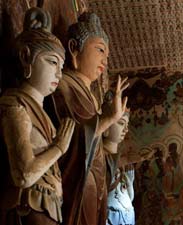Part 1- Flying Apsaras
Over 70 years ago, a young Chinese painter Chang Shuhong decided to leave Paris and turned to his turbulant homeland, what attracted him in particular was the albums "Les Grattes de Touen-Houang". The photos in the albums were tanken in 1907 by French explorer Paul Pelliot at the Mogao Grattoes in Dunhuang, in northwest China's Gansu Province.
The album contains about 300 photos of murals and sculptures. Chang was taken aback when he saw the photos for the 1st time. Just a glimpse at the Dunhuang murals beside the same river led 32-year-old Chang to give up his comfortable life in Paris and return to China. Since then, he's never left Dunhuang.
